ermir found whitman in times square
Please enable Javascript and Flash to view this Flash video.
When I read the passages from the Leaves of Grass, I felt that the surroundings blended with the lines of the poem.
Please enable Javascript and Flash to view this Flash video.
When I read the passages from the Leaves of Grass, I felt that the surroundings blended with the lines of the poem.

Last week the class met at Fort Greene Park in Brooklyn. A park with a significant history. A site of the Revolutionary War fort, and monument dedicated to the prison ship martyrs, who where held by the British.
As I walked up the grand stairs looking at the monument, it felt like the monument was a “light house” showing the direction. We all met in front of the Visitor’s Center. There was Greg Trupiano the leader of the tour. A very knowledgeable and inspiring person. The tour started with an Nicole, a opera singer who sang Oh Freedom. Mr. Trupiano started the tour with history of the park, and made connection with Walt Whitman history. In the meanwhile Mr. Trupiano had invited a reader, who read loud the passages from Whitman. In that beautiful fall day, Whitman passages were powerful throw the voice of reader.
Walt Whitman loved the Brooklyn, and he also wrote about the Fort Greene Park saying that “Brooklyn needs lungs.” He was concerned about the future, and the people of his city.
After we moved down to the entrance of the vault were the bones of the prisoners are buried. Tour leader explained that in the crypt was only one full body skeleton, who is believed to be Benjamin Romaine. The bones are collected from the shore, what is now know as Navy Yard.
From there we moved to the intersection of the Myrtle Avenue and Portland Avenue, where Whitman lived. Now there is the new building build by the city and named “Walt Whitman Houses.”
The final destination was the 99 Ryerson Street the only house that stand, where Whitman lived. The building has gone through some changes and it is not exactly the same, as it was, when Whitman lived there.
A great tour and very informative.
Here is a link to the images taken in the tour: http://www.flickr.com/photos/45007764@N06/?saved=1
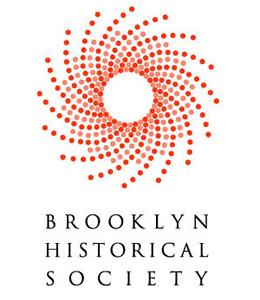
The visit at the Brooklyn Historical Museum was informative. I am majoring in architecture and I was amazed by the maps they had at the Museum. When the curator showed us the historical atlases, I felt more comfortable than the rest of my fellow classmates and I jumped right in action, to figure out how the atlases worked, which they were not any different from sandborn. Some maps were in microfiche, and they were new to my vocabulary, something that I never knew about. For the first time in my life I got to use the microfiche scanner and the films. It looked very complicated at the first look but after you sat down in the chair and you start using it, you make it yours right away.
Another important feature they had in the museum were the records of lots and blocks of the city. They had dates from 17th century of landlords who bought or sold their properties. It was a great part of history because you would see and learn, how the legal letters where done back in the time. Also the values of the real estate of the time.
The BHS had more to offer but I am definitely going back to explore it more for this class and even for my future classes or projects.
The more one visits the sites where Walt Whitman lived the more new and fascinating things one finds out about them. As I was standing on the Fulton Ferry Landing, looking at the amazing views of the city’s skyline, I was thinking: “How did this place look like 100, 200, or even 300 years ago?”. Well, the answer to my question was literally lying right under my feet. There are ‘manhole’ plates that show the map of the place at a certain period in the past. It is amazing how we live in such a big city with so many beautiful things to look at and appreciate every single day. At the same time, it is unfortunate that many of us are not as much aware of the greatness of this city’s history and how much this city has to offer as we should be. Visiting New York City could be a dream for many people, a dream that everyone of us that lives here has come true. We should appreciate and pay more attention to the details of this city’s history because we have this opportunity in our hands as Whitman did as well and appreciated it everyday…
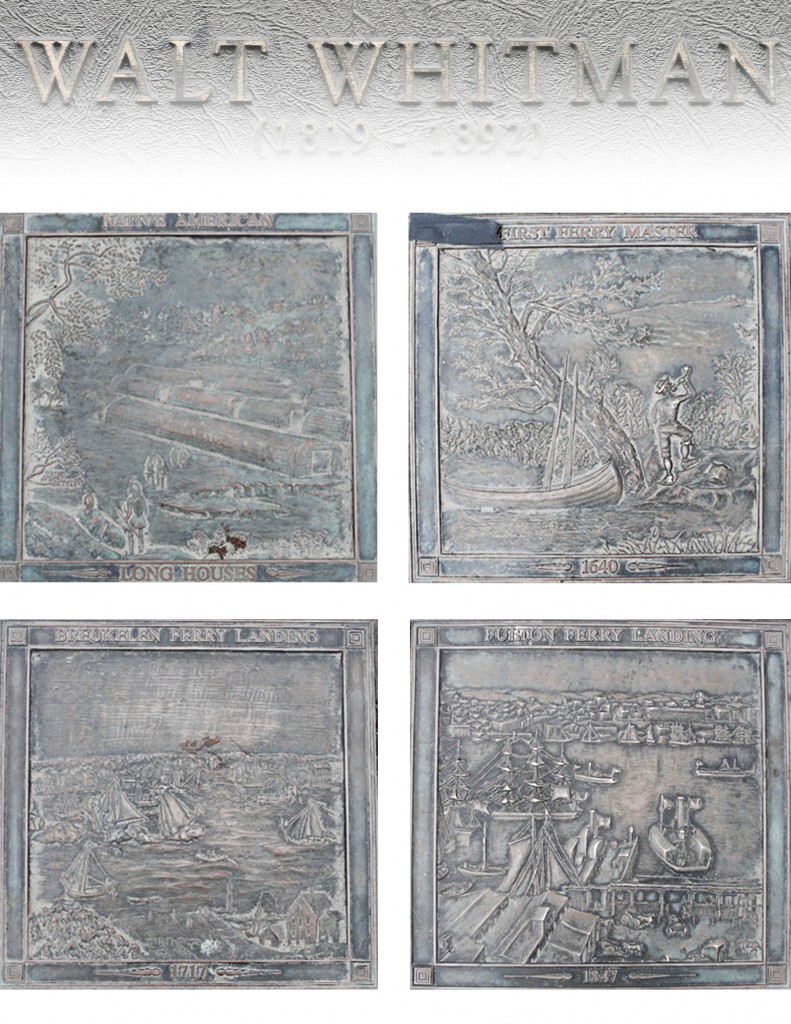
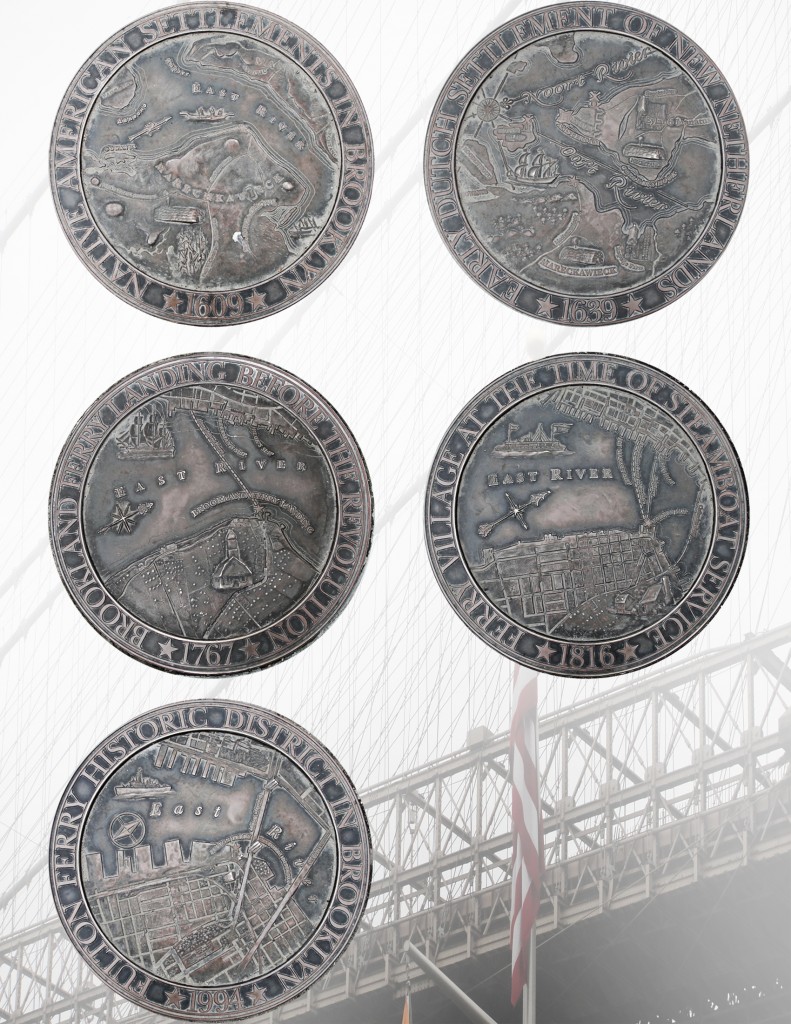
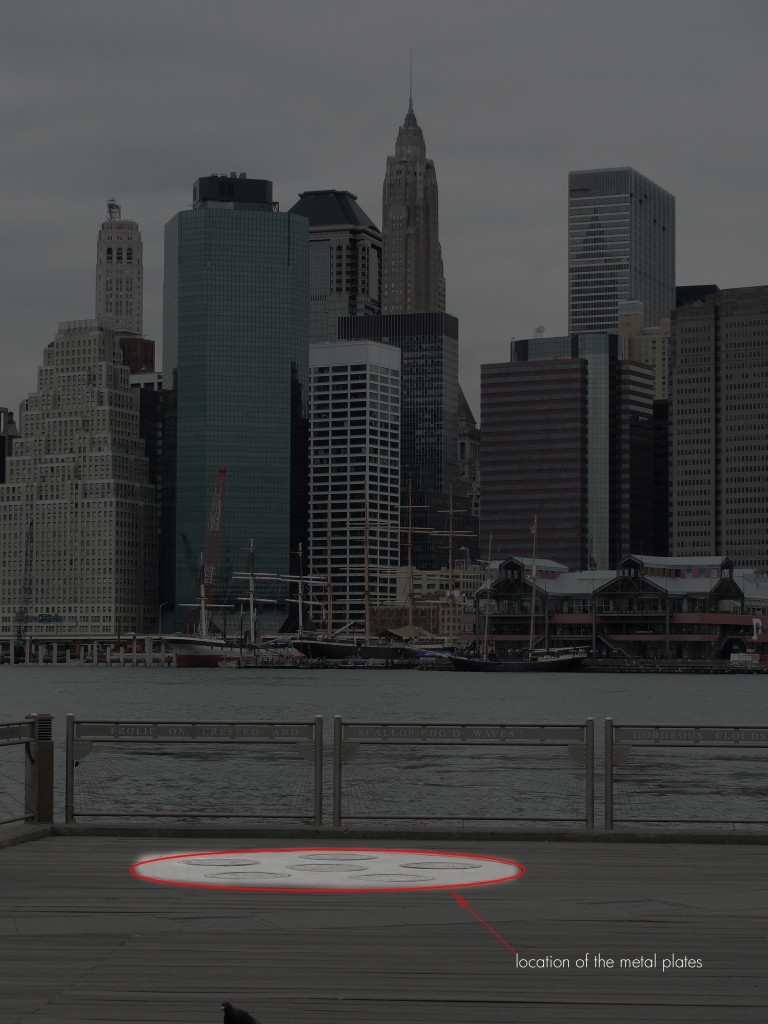
flow on, river! flow
with the flood-tide. and
ebb with ebb-tide!
frolic on, crested and
scallop-edg’d waves!
gorgeous clouds of the
sunset! drench with your
splendor me, or the men
and women generations
after me! cross from shore
to shore, countless crowds
of passengers! stand up,
tall masts of mannahatta!
stand up, beautiful
hills of brooklyn!
throb, baffled and
curious brain! throw out
questions and answers!
-walt whitman-
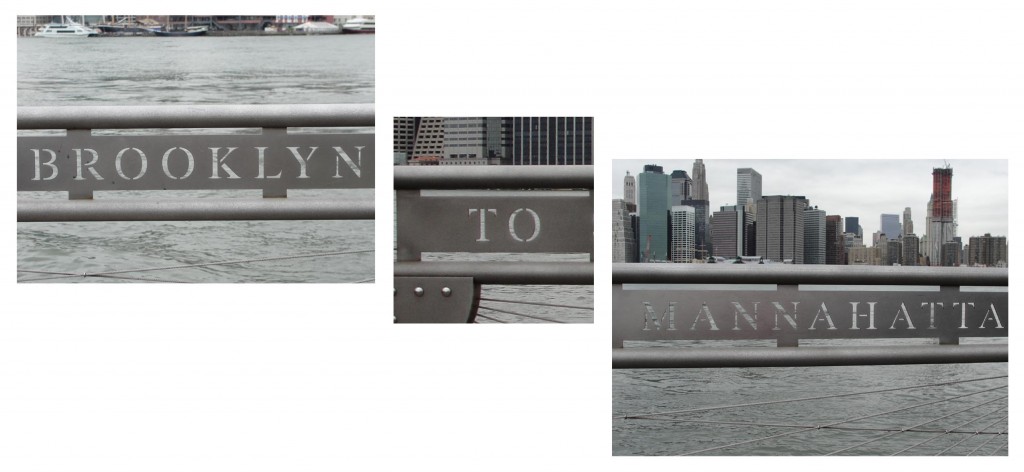
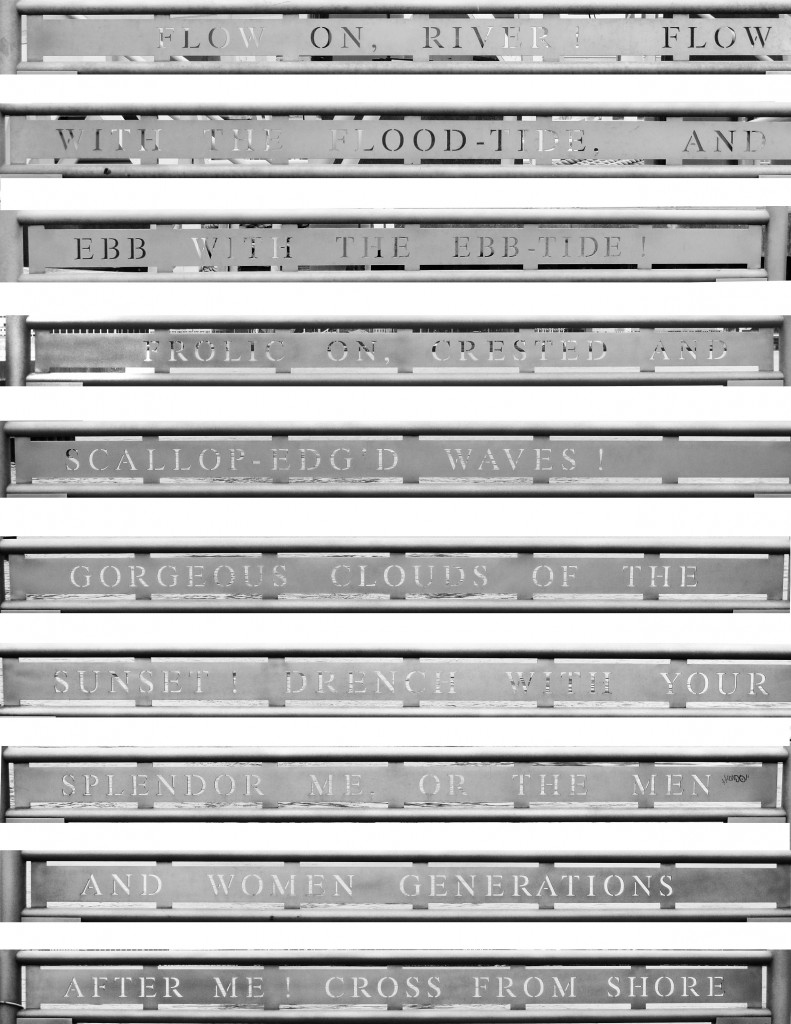
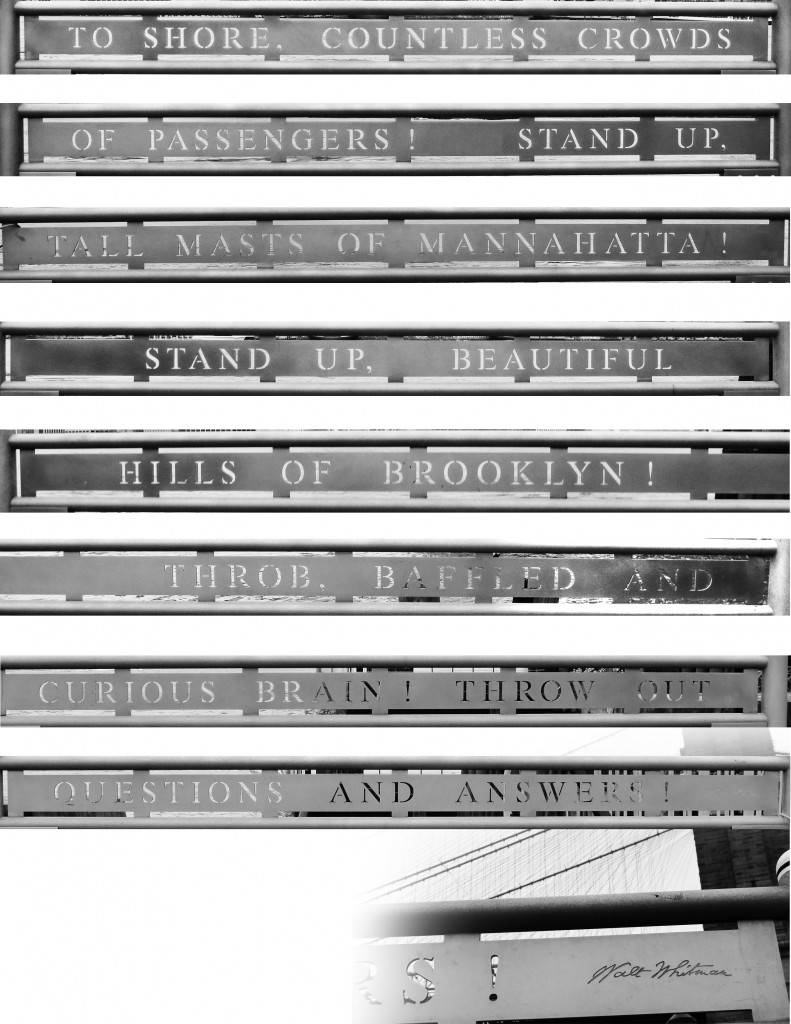
_
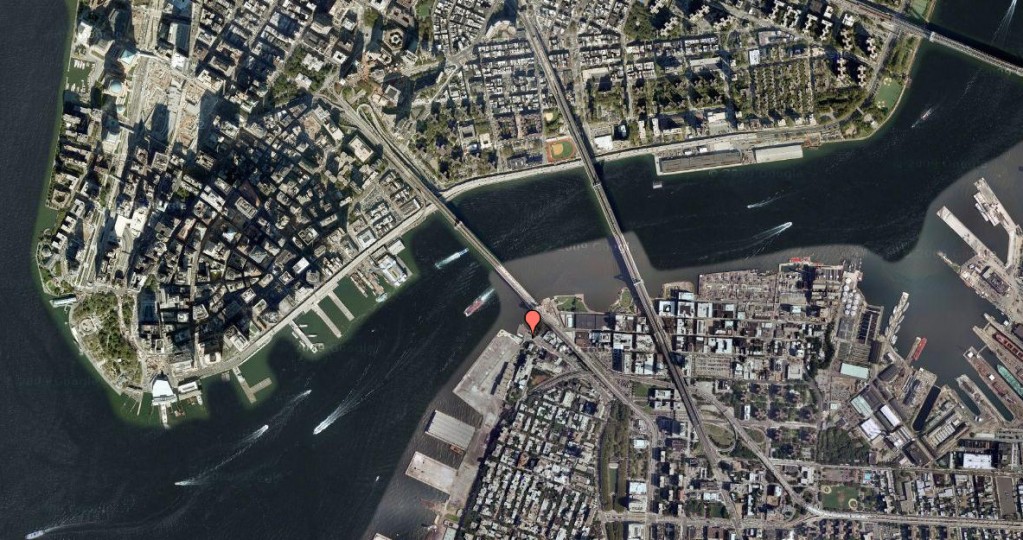
fulton ferry landing by google
_
These passages from Walt Whitman are carved in the hand-railing of the Fulton Ferry Landing pier.
While I was standing at the pier and looking out at Manhattan, I could still imagine, how it might have had been in early 1800. The crowd of tourists visiting the space and creating “chaos” who is going to take the best spot to take a picture. Reading the passages from Whitman
Cross from shore to shore,
Countless crowds of passengers!
We experience this everyday in the subways, or buses, where everyone is rushing to go somewhere. Whitman liked riding with ferry because it made him interact with people more.
What was that influence Walt Whitman to not believe at Christianity, at the time where his family had Christian background?
Walt Whitman was born in West Hills, near Huntington, in Long Island. Coming from a mixed family, Walt Whitman’s father came from an English family and his mother’s origin was Dutch.
Walter Whitman Sr. the father of the writer Walt Whitman came from a farmer’s family, but he is believed to have had democratic tendencies. Even though he was a farmer he read books and journals. One of his favorite authors was Thomas Paine. Walt’s father kept a couple of books which where against Christianity. In the “Walt Whitman A Life” by Justin Kaplan, the author writes in chapter “3. – Mother, Father Water, Earth, Me…” that
“The Whitmans revered Frances Wright, Scottish-born freethinker,
feminist, and reformer, an intimate. of the Marquis de La
fayette. With Thomas Jefferson as her authority, she announced that
“Washington was not a Christian.” “The first and last thing I would
say to man,” she wrote in her utopian tract, A Few Days in Athens,
“is, think for yourself.” The elder Whitman owned a copy and sub
scribed to her paper, the Free Enquirer; Walt read these, .heard
Frances Wright lecture, and remembered her in feature, soul and
thought as “more than beautiful: she was grand…. She possessed
herself of my body and soul.” Walt’s father also owned a copy of The
Ruins, a celebrated attack on Christianity and supernaturalism by the
French savant Count Constantin de Volney.”
Growing in this “atmosphere” Walt Whitman had same view as his father and also the same as big figures like Abraham Lincoln. In the Song of Myself, Walt Whitman writes
“I have said that the soul is not more than the body,
And I have said that the body is not more than the soul”.
Clearly he shows the ultimate importance of the individual. He draws equality between the Man and God.
May the father influenced him early in his life to a different view of the religion?
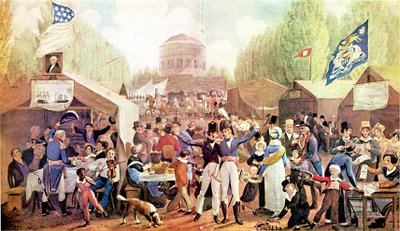
Reading the passages from “Leaves of Grass” of Walt Whitman at first is a little confusing and distracting because he jumps from a topic to another topic and comes back in a different way. In the passages where he describes the fourth of July, he talks about everyone in the site, from the jeered people like prostitutes to the most honored like patriots.
“The prostitute draggles shawl, her bonnet bobs on her tipsy and pimpled neck,
The crowed laugh at her background oaths, the men jeer and wink to each other,
(Miserable! I do not laugh at your oath nor jeer you,)”………
…… Patriarchs sit at supper with sons and grandsons and grandsons around them,
page 43-44
When you read more and you see the big picture than you start to understand the power of the passage and you start making sense of his writings.
I hear the sound of the human voice . . . . a sound I love,
I hear all sounds as the are tuned to their uses . . . . sounds of the city . . . . sound of the day and night;
Talkative young ones to those that like them . . . . the recitative of fish-pedlars and fruit-pedlars . . . . the laud laugh of the work people at their meals.
The angry base of disjointed friendship . . . . the faint tones of the sick,
The judge with hands tight to the desk, his shake lips pronouncing a death-sentence,
The heave’e’yo of stevedores unlanding ships by the wharves . . . . the refrain of the anchor-lifters;
The ring of alarm-bells . . . . the cry of the fire . . . . the whirr of swift-streaking engines and hose-carts with premonitory tinkles and colored lights,
The steam-whistle . . . . the solid roll of the train of approaching cars;
The slow-march played at night at the head of the association,
They go to guard some corpse . . . . the flag-tops are draped with black muslin.
page 56-57
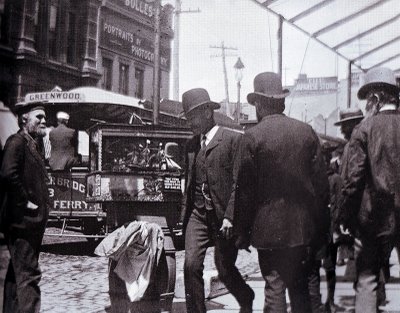 image is believed to has been taken in mid 19 century showing pedestrians at South Brooklyn
image is believed to has been taken in mid 19 century showing pedestrians at South Brooklyn
brooklynhistory.blogspot.com/
> The reason why I decided to quote these lines is because Whitman described a moment that he was carefully observing, what was going on around him. He explains every voice he hears, and he relates it to him self. for example “I hear the sound of the human voice . . . .a sound I love.” Whitman liked to observe people as all of us sometime like to do while he sit in a coffee shop or from a balcony.
The image I chose is believed to be sometime mid 1800. The image shows a busy street in Brooklyn where no one looks like are posing for the camera but rather moving freely, same as when we observe someone and they do not know about it.
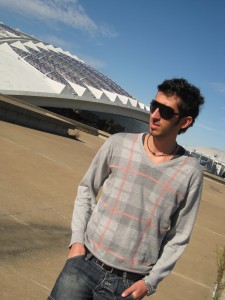
I am of old and young, of the foolish as much as the wise,
Regardless of others, ever regardful of others,
Maternal as well as paternal, a child as well as a man,
Stuffed with stuff that is coarse, ans stuffed with the stuff that is fine,
One of the great nations, the nation of many nations – the smallest the same and the larges the same,
A southern soon as a northerner, a planter nonchalant and hospitable,
A Yankee bound my one way . . . . ready for trade . . . . my joints the limberest joints on earth and the sternest joints on earth,
A Kentuckian walking the vale of the Elkhorn in my deerskin leggings,
A boatman over the lakes or bays or along coast . . . . a Hoosier, a Badger, a Buckeye,
A Louisianian or Georgian, a poke-easy from sandhills and pines,
At home on Canadian snowshoes or up in the bush, or with fisherman off Newfoundland,
At home in the fleet if iceboats, sailing with the rest and tacking,
At home on the hills of Vermont or in the woods of Maine or the Texan ranch,
Comrade of Californians . . . . comrade of three northwesterners, loving their big proportions,
Comrade of raftsmen and coalmen – comrade of all who shake hands and welcome to drink and meat;
A learner with simplest, a teacher if the thoughtfulest,
A novice beginning experient of myriads of seasons,
Of every hue and trade and rank, of every caste and religion,
Not merely of the New World but Africa Europe or Asia . . . . a wandering savage,
A farmer, mechanic, or artist . . . . a gentelman, sailor, lover or quaker
A prisoner, fancy-man, rowdy, lawyer, physician or priest.
page 44-45.
>Whitman is everyone of us and he expresses freely in his poem and everyone of us can find them-self in the lines of Whitman. But can Whitman represent the society of the time he lived and how can his writings be still relevant to today’s society?